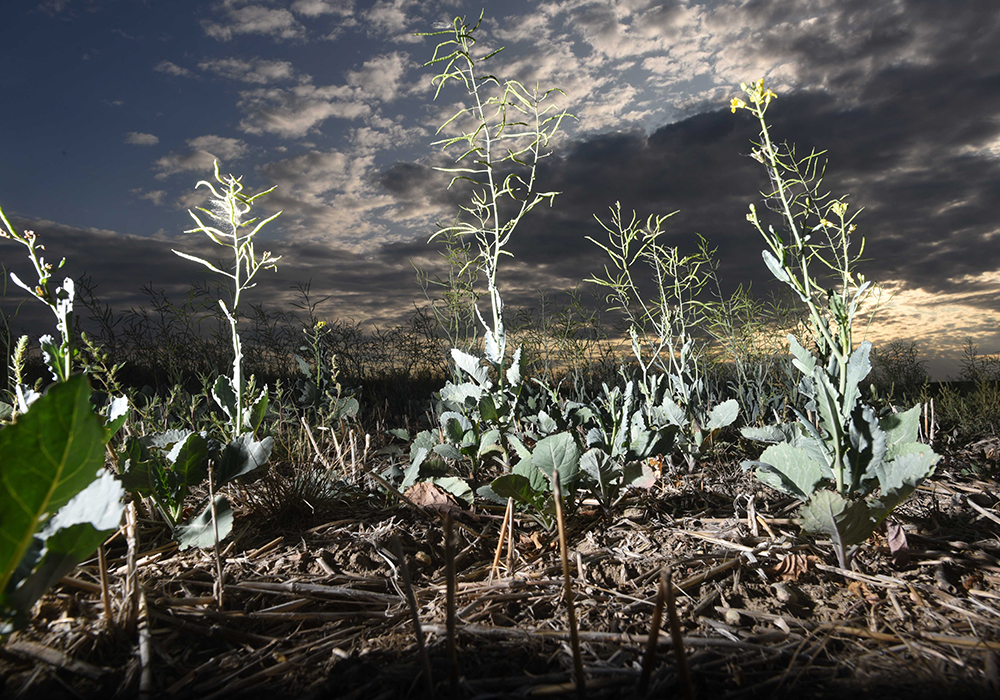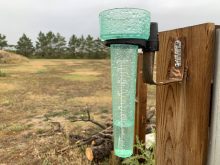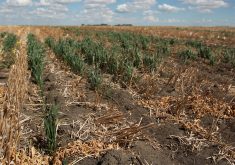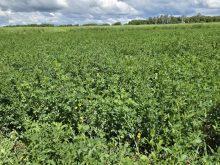A welcome downpour of rain did not fix mounting problems with Alberta’s crop, says an analyst.
Derek Squair, president of Exceed Grain Marketing, recently completed an extensive crop tour of the province.
Crop development is poor south of Red Deer, where it continues to be extremely dry.
Read Also

Using artificial intelligence in agriculture starts with the right data
Good data is critical as the agriculture sector increasingly adopts new AI technology to drive efficiency, sustainability and trust across all levels of the value chain.
“We’re finding that the barley and wheat especially have been hurt pretty bad already in those areas,” he said.
Crops are heading out, and they are only six to seven inches tall. Squair estimates those crops will only produce 60 to 70 percent of average yields even if conditions improve from now through harvest.
“If they don’t have very good conditions then it’s going to be trimmed even more,” he said.
There are a lot of areas in Alberta where the canola did not germinate properly, resulting in small plants.
Canola plants only covered 30 to 40 percent of many fields in Alberta versus “fully cabbaged out” canola in Saskatchewan, where the fields were 100 percent blanketed with green matter.
But canola is an indeterminant plant that can bounce back from early-season hardship, so there is still a “fair bit of hope” for that crop.
A lot of the canola in Alberta is two to three weeks behind normal development due to the poor start. He worries about an early frost and potential harvest complications caused by uneven development.
The peas and lentils in central and northern Alberta are faring better than the other major crops, but there are some problems with lentils in the southern part of the province.
Squair said the recent deluge of rain in the western Prairies should help crops, but it mainly fell north of Red Deer in the Edmonton through Saskatoon region.
The seven-day total rainfall for the period ending June 18 was 65 to 80 millimetres for central Alberta and 25 to 35 mm in central Saskatchewan.
Saskatchewan has generally received more timely rains than Alberta, and the latest shower helped fill in any patchy areas of dryness.
“Everything looks much better in Saskatchewan,” said Squair.
That observation is reflected in a satellite-based map of vegetative growth for the week ending June 10 showing that Saskatchewan was almost entirely green, indicating higher-than-normal vegetative growth compared to the 30-year average.
The hue in Alberta and Manitoba was yellow and brown, signaling normal to below-normal vegetative growth.
Squair said there are disease concerns with pulse crops in regions of Saskatchewan that received excess rain.
Marilee Pregitzer, agroclimate specialist with Agriculture Canada, said much of the prairie region seems to be trending in the right direction, with some notable exceptions.
“It started off looking fairly dry in all the Prairies and things are improving,” she said.
In May, there were drought concerns in large portions of all three prairie provinces, but by early June conditions were looking pretty good, especially for Saskatchewan.
She hopes the recent rainfall will help the plight of farmers in portions of Alberta.
“There was a lot of accumulated precipitation in central Alberta and also in central Saskatchewan,” said Pregitzer.
“Things could have improved due to that amount of rain.”
Squair said Manitoba is a bit of a mixed bag due to spotty thunderstorm activity. But he is concerned about the hotter-than-usual spring weather.
Fargo, North Dakota, has experienced more days above 32 C than any other city in North America this spring, and Winnipeg is not that far north of Fargo.
“The crop is developing so quickly,” he said.
Canola fields are flowering, something that doesn’t usually happen until July 1 in Manitoba.
“The plant needs a lot more moisture now than it does normally on the 19th of June.”
In fact, crops throughout most of Western Canada are 10 to 14 days ahead of normal development due to the unusually hot weather, except for the damaged canola fields in southern Alberta that are way behind.
Squair said it is too early to be making any average yield forecasts because conditions can change in a hurry. He will have a much better idea where things are heading by mid-July.
Contact sean.pratt@producer.com
















